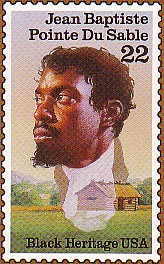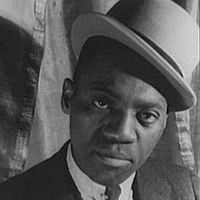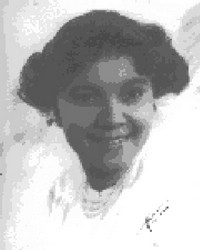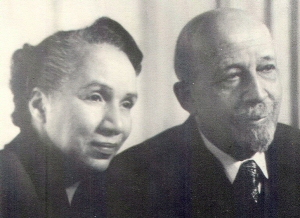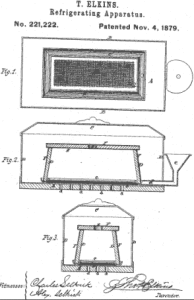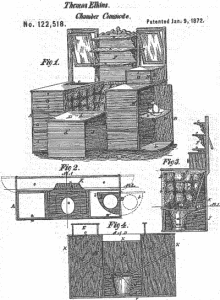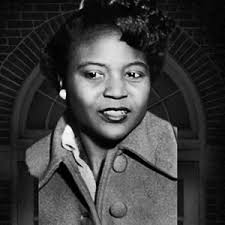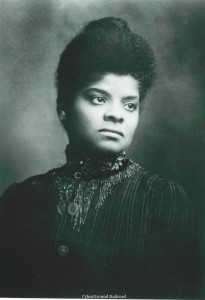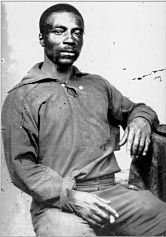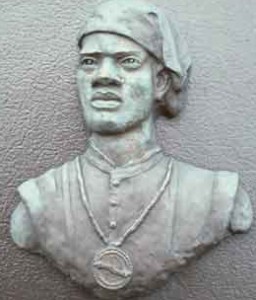Add your feed to SetSticker.com! Promote your sites and attract more customers. It costs only 100 EUROS per YEAR.
Pleasant surprises on every page! Discover new articles, displayed randomly throughout the site. Interesting content, always a click away
BlackUSA
History | Tradition | Culture | CuisineJean-Baptist-Point Du Sable 14 Apr 2025, 9:54 pm
The post Jean-Baptist-Point Du Sable appeared first on BlackUSA.
Bill Bojangles Robinson 14 Apr 2025, 4:34 pm
Bill “Bojangles” Robinson (May 25, 1878 – November 25, 1949) was an American tap dancer and actor of stage and film. Audiences enjoyed his understated style, which eschewed the frenetic manner of the jitterbug in favor of cool and reserve; rarely did he use his upper body, relying instead on busy, inventive feet, and an expressive face.
A figure in both the black and white entertainment worlds of his era, he is best known today for his dancing with Shirley Temple in a series of films during the 1930s, and for starring in the 1943 musical Stormy Weather, loosely based on Robinson’s own life.
The post Bill Bojangles Robinson appeared first on BlackUSA.
Muriel O. Farmer 14 Apr 2025, 3:48 pm
Born December 2, 1917 Muriel, the daughter of a Chicago policeman, was one of the first women to graduate from the prestigious John Marshall Law School in Chicago, IL. After graduating from the University of Illinois in Champaign-Urbana at the age of 21, she worked as a social worker while studying law. After passing the bar Muriel went into the legal profession full time and spent over 50 years practicing law, becoming one of the best known divorce lawyers in the state.
Oddly enough, two of her best friends, both black women, were also John Marshall graduates. Her cousin went on to become an acclaimed criminal lawyer (Bernice Z. Leaner) and her best friend went on to be Chicago’s first Black Alderwoman (Anna Langford).
The post Muriel O. Farmer appeared first on BlackUSA.
Shirley Graham 14 Apr 2025, 8:52 am
was born November 11, 1896 in Indianapolis, Indiana on a farm which had been part of the underground railroad and had served as a stopping point for runaway slaves on their way to Canada. It belonged to her grandfather, a former slave who had been freed prior to the Civil War.
Over the years she studied at the Sorbonne, Oberlin, and attended Yale on a Rosenwald Fellowship in Creative Writing. She received both her bachelor’s degree and a master’s degree in music from Oberlin. After receiving her MA degree, she was appointed Head of the Fine Arts Department at Tennessee State College.
Later she took over the directorship of the Negro United of the Federal Theater in Chicago. While in that position she adapted Eugene O’Neill’s The Hairy Ape for an all black cast and worked on a black version of The Mikado. She also wrote the music for a children’s play.
An avid historian, she also wrote biographies of Phyllis Wheatley, Frederick Douglass, George Washington Carver, Benjamin Banneker, and Paul Robeson.
Graham was married to educator and social reformer W.E.B DuBois in 1951, one year after the death of Nina Du Bois, his wife of fifty-five years. During the next ten years the Du Boises were involved in various and sundry legal battles with the government during the McCarthy era over Du Bois’ involvement with the Communist Party. In 1961 the Du Boises moved to Ghana and became citizens at the instigation of then President Kwane Nkrumah.
After her husband’s death in 1963 and the military coup in 1967 which ousted Nkrumah from power, Shirley Graham Du Bois moved to Cairo where she lived for many years. When she later tried to return to the United States, the State Department refused to issue her a visa citing her association with subversive groups over the years. She was subsequently allowed to visit the United States for two months in 1971. During a more exhaustive visit in 1975 she was awarded an honorary doctorate by the University of Massachusetts at Amherst. Shirley Graham Du Bois died on March 27, 1977 in Peking, China where she had gone for treatment for breast cancer.
The post Shirley Graham appeared first on BlackUSA.
Thomas Elkins 13 Apr 2025, 9:35 pm
Thomas Elkins designed a device that helped with the task of preserving perishable foods by way of refrigeration. At the time, the common way of accomplishing this was by placing items in a large container and surrounding them with large blocks of ice. Unfortunately, the ice generally melted very quickly and the food soon perished.
Elkins’ device utilized metal cooling coils which became very cold and would cool down items which they surrounded. The coils were enclosed within a container and perishable items were placed inside. The coils cooled the container to a temperature significantly lower than that inside of a room thereby keeping the perishable items cool and fresh for longer periods of time.
Elkins patented this refrigerated apparatus on November 4, 1879 and had previously patented a chamber commode in 1872 and a dining, ironing table and quilting frame combined in 1870.
An improved chamber commode (toilet) was patented by Thomas Elkins on January 9, 1872. Elkins’ commode was a combination bureau, mirror, book-rack, washstand, table, easy chair, and chamber stool. It was a very unusual piece of furniture.
The post Thomas Elkins appeared first on BlackUSA.
James A Healy 13 Apr 2025, 5:29 pm
Bishop Bacon’s successor, James Augustine Healy, was appointed February 12, 1875, and consecrated as Bishop of Portland at the Cathedral of the Immaculate Conception (see Cathedral) on June 2, 1875.
James Augustine Healy became the first black bishop ordained in the United States. He was the son of an Irish immigrant, Michael Healy, who became a prosperous plantation-owner in Georgia, and a mulatto woman who was actually a slave.
James was educated in northern schools and later attended the newly established Holy Cross College. There he made his decision to enter the priesthood. He furthered his studies in Montreal and Paris where he was ordained in 1854 at the Cathedral of Notre Dame.
After ordination Father Healy was assigned to Bishop John Fitzpatrick’s Boston Diocese. He remained there serving first at the House of the Angel Guardian, then as Chancellor of the Diocese and finally as pastor of St. James Church. When his appointment came as the second Bishop of Portland, he was forty-five years old.
As a pastor in Massachusetts, Bishop Healy had already proven himself an accomplished civil rights advocate for those who were unable to speak for themselves. Now as the new spiritual leader of Maine and New Hampshire, he had special qualifications that made him an ideal choice. On a personal level, he was half-Irish which bonded him with parishioners on Munjoy Hill, many of whom were newly arrived from Ireland. He spoke fluent French; that endeared him to the Acadians of northern Maine.
During Bishop Healy’s years in Portland, his Cathedral was still a new church, requiring little renovation. This left him time for not only social justice projects but many other endeavors. The building of the new St. Dominic’s Church, the enlarging of Calvary Cemetery, the establishment of the Conference of St. Vincent de Paul for the care of the poor, the purchase of land on Little Diamond Island for the orphans’ use in summer, the opening of St. Joseph’s Chapel in Deering, and the establishment of Sacred Heart parish are only a few of Bishop Healy’s accomplishments during his tenure.
On June 29, 1900, Bishop Healy celebrated his Silver Jubilee. Scarcely a month later, on August 5, 1900, Bishop James Healy died. His funeral took place at the Cathedral on August 9th. As he requested, burial was at Calvary Cemetery. A Celtic cross marks his grave.
The post James A Healy appeared first on BlackUSA.
Autherine Lucy Foster 13 Apr 2025, 1:22 pm
Autherine Juanita Lucy was the first black student to attend the University of Alabama, in 1956. She was born on October 5, 1929 in Shiloh, Alabama and graduated from Linden Academy in 1947. She went on to attend Selma University in Selma, and the all-black Miles College in Fairfield – where she graduated with a BA in English in 1952.
Later in 1952, at the encouragement of and along with a Miles classmate, Pollie Ann Myers, she decided to attend the University of Alabama as a graduate student but, knowing that admission would be difficult due to the University’s admission policies, she and Myers approached the National Association for the Advancement of Colored People (NAACP) for help. Thurgood Marshall, Constance Baker Motley, and Arthur Shores were assigned to be their attorneys. While they started preparing her case, she worked as a secretary. Court action began in July 1953.
On June 29, 1955, the NAACP secured a court order preventing the University from rejecting the admission applications of Lucy and her friend based upon their race. Days later, the court amended the order to apply to all other African-American students seeking admission. The Supreme Court upheld this in Lucy v. Adams on October 10, 1955. On the very eve of the day Lucy and her friend (who had married to become Pollie Myers Hudson) were to register, the University Board of Trustees rejected Hudson on the grounds of her “conduct and marital record”, but reluctantly allowed Lucy to register. However, she was barred from all dormitories and dining halls.
At least two sources have said that the board hoped that without Hudson, the more outgoing and assured of the pair and whose idea it originally was to enroll at Alabama, Lucy’s own acceptance would mean little or nothing to her, and she would voluntarily choose not to attend. But Hudson and others strongly encouraged her, and on February 3, 1956, Lucy enrolled as a graduate student in library science, becoming the first African American ever admitted to a white public school or university in the state.
On the third day of classes, a hostile mob assembled to prevent Lucy attending classes. The police were called to secure her admission but, that evening, the University suspended Lucy on the grounds that it could not provide a safe environment. Lucy and her attorneys filed suit against the University to have the suspension overturned. However, this suit was not successful and was used as a justification for her permanent expulsion. University officials claimed that Lucy had slandered the university and they could not have her as a student.
The University of Alabama finally overturned her expulsion in 1980, and in 1992, she earned her Masters degree in Elementary Education from the University that she had applied to decades earlier. In a complete reversal of spirit from when she was first admitted there, the university named an endowed scholarship in her honour and unveiled a portrait of her in the student union overlooking the most trafficked spot on campus. The inscription reads “Her initiative and courage won the right for students of all races to attend the University.”
She is a sister of the Zeta Phi Beta sorority.
The post Autherine Lucy Foster appeared first on BlackUSA.
Ida B. Wells-Barnett 13 Apr 2025, 3:38 am
b.1862 – d.1931. Anti-lynching crusader, journalist, and advocate for racial justice and women’s suffrage. For Wells-Barnett, overcoming racism and halting the violent murder of black men was a central mission among her wide-ranging struggles for justice and human dignity. Born in Mississippi, she was educated at Rust University, actually a high school and industrial school. From 1884 to 1891, she taught in a rural school near Memphis and attended summer classes at Fisk University in Nashville.
A pattern of resistance to racial subordination was set early in Wells’ life. In 1887, she purchased a railroad ticket in Memphis and took a seat in the section reserved for whites. When she refused to move, she was physically thrown off the train. She successfully sued the Chesapeake and Ohio Railroad for damages. Upon appeal, however, the Supreme Court of Tennessee reversed the lower court’s ruling.
In 1891, Wells-Barnett co-founded the militant newspaper, Free Speech, in Memphis. She wrote scathing editorials denouncing local whites for lynching black men ostensibly to protect the sanctity of white womanhood but actually to eliminate them as economic competitors. Her pieces provoked a mob to burn her press while she was on a lecture trip to Philadelphia and New York. With a death threat hanging over her in Memphis, Wells-Barnett decided to remain in the North. During her exile, she wrote the pamphlet A Red Record (1895), a statistical account and analysis of three years of lynchings.
Wells-Barnett then launched an international crusade against lynching. She lectured in England in 1893 and 1894. She implored churches and organizations like the Young Women’s Christian Association and the Woman’s Christian Temperance Union to lend support. In 1895, she married Ferdinand Lee Barnett, lawyer and editor of the Chicago Conservator. They raised four children, and she adeptly managed career, marriage, motherhood, and social protest work.
Given the fervor of her determination to end racial discrimination and sexual inequality, it is not surprising that Wells-Barnett played a pivotal role in the development of a local and national network of black women’s clubs. President of the Ida B. Wells Club and founder of the Negro Fellowship League and the Alpha Suffrage Club of Chicago, Wells-Barnett greatly influenced black life during the Progressive Era. She worked with Jane Addams to block the establishment of segregated public schools in Chicago and served as probation officer from 1913 to 1917 for the Chicago municipal court.
When the National Association for the Advancement of Colored People (NAACP) was formed in 1909, Wells-Barnett insisted that the leadership take an unwavering stand against lynching and, years later, withdrew when the organization’s leadership failed to adopt the militant posture she advocated. She was also unable to persuade leaders in the women’s suffrage movement to speak out against racism and denounce lynching. The young white leaders of the National American Woman Suffrage Association–especially its southern members–feared that too close an association with black issues would jeopardize their cause. It would not be until 1930, the year before Wells-Barnett’s death, that black and white women joined forces to launch the Association of Southern Women for the Prevention of Lynching.
The post Ida B. Wells-Barnett appeared first on BlackUSA.
Congressional Black Caucus 12 Apr 2025, 10:53 pm
Since its establishment in 1971, the Congressional Black Caucus (CBC) has been committed to using the full Constitutional power, statutory authority, and financial resources of the federal government to ensure that African Americans and other marginalized communities in the United States have the opportunity to achieve the American Dream. As part of this commitment, the CBC has fought for the past 48 years to empower these citizens and address their legislative concerns by pursuing a policy agenda that includes but is not limited to the following:
- reforming the criminal justice system and eliminating barriers to reentry;
- combatting voter suppression;
- expanding access to world-class education from pre-k through post-secondary level;
- expanding access to quality, affordable health care and eliminating racial health disparities;
- expanding access to 21st century technologies, including broadband;
- strengthening protections for workers and expanding access to full, fairly-compensated employment;
- expanding access to capital, contracts, and counseling for minority-owned businesses; and
- promoting U.S. foreign policy initiatives in Africa and other countries that are consistent with the fundamental right of human dignity.
For the 116th Congress, the CBC has a historic 55 members of the U.S. House of Representatives and the U.S. Senate, representing more than 82 million Americans, 25.3 percent of the total U.S. population, and more than 17 million African-Americans, 41 percent of the total U.S. African-American population. In addition, the CBC represents almost a fourth of the House Democratic Caucus.
The CBC is engaged at the highest levels of Congress with members who serve in House leadership. Representative James E. Clyburn (D-SC) serves as the Majority Whip in the House of Representatives, Representative Hakeem Jeffries (D-NY) serves as Chairman of the House Democratic Caucus and Representative Barbara Lee (D-CA) serves as co-chair of the House Democratic Steering and Policy Committee. In addition, five CBC members serve as chairs on full House committees, and 28 CBC members serve as chairs on House subcommittees.
While the CBC has predominately been made up of members of the Democratic Party, the founding members of the caucus envisioned a non-partisan organization. Consequently, the CBC has a long history of bipartisan collaboration and members who are both Democrat and Republican.
As founding member Rep. William L. Clay, Sr. said when the CBC was established, “Black people have no permanent friends, no permanent enemies…just permanent interests.”
The post Congressional Black Caucus appeared first on BlackUSA.
Enlistment of Slaves as Union Sailors 11 Apr 2025, 10:32 pm
The Secretary of the Navy Authorized enlistment of slaves as Union sailors, September 25, 1861
The Union Navy began to employ African American men on board ships as crew members and sailors very early in the war. And as the war progressed, blockading squadrons and naval vessels also took on board numerous “contraband” slaves who managed to escape from land to sea.
By 1863, the Union navy was enlisting and actively recruiting runaway slaves as crewmembers or paid sailors, usually at the low rank of “landsman.” By the end of the war nearly 20,000 black sailors had enlisted, a figure which represented nearly 20 percent of the navy’s enlisted men. The majority of these black sailors were men who had been enslaved but seized naval service as a route to freedom.
A few of the thousands of “contraband” slaves who became sailors were present at the battles of Galveston and Sabine Pass in 1863. Both battles demonstrated the unique dangers that African American men faced when they participated in combat operations against the Confederacy. One “escaped slave” participated in the Battle of Galveston of January 1, 1863, before being captured and marched to Houston, and according to a newspaper report at the time, the crowds who gathered in the city to watch the parade of federal prisoners from the U.S.S. Harriet Lane down Main Street jeered at and paid special attention to one of the “negroes” who was “clothed in sailor’s uniform”
But African American men who became Union sailors risked more than just ridicule if they were captured by Confederate forces. The diary of Union prisoner of war Alexander Hobbs, who was also captured from the U.S.S. Harriet Lane, reported on January 15, 1863, that “six coulered men” from aboard his ship–all “but one or two … free born”–were to be “sold togather”
Contemporary records show that “six Negroes claiming to be free” from aboard the Harriet Lane were in fact forced into labor at the Texas State Penitentiary in Huntsville, confirming the outlines of Hobbs’s story. Whether they ever escaped the penitentiary, even after war’s end, is difficult to tell.
The post Enlistment of Slaves as Union Sailors appeared first on BlackUSA.
Matthias de Sousa 11 Apr 2025, 7:38 am
In 1634 Matthias de Sousa and John Price were picked up on the island of Barbados by two small ships that were sailing towards the Chesapeake Bay. Neither of the men had any money to pay for their voyage, so they agreed to work for up to seven years in order to repay the debt. Once their term of service was over, they were both to be declared freemen. Not much is known about the life of John Price after the seven years of service, but there is some documented records concerning Matthias de Sousa.
Matthias de Sousa was a passenger on the Dove when it landed on St. Clemens Island on March 25, 1634. “He was an aide to Father White, the Jesuit priest who came with the founding company of the state of Maryland.”
After seven years of service Matthias was said to have been the captain of a sailboat. Looking for Indian villages to trade with, he had explored new rivers and inlets. When he would find one he would stop and trade his cloth and knives for shining beaver skins which were very popular in Europe.
Matthias is believed to have possibly witnessed the first shipment of slaves into Maryland; the first slaves that emerged from the slaver’s hold and blinked at the bright sun that greeted them once they got off the slaver. One time when he was sailing down the Chesapeake Bay another ship was making its way north, loaded with what seemed unwilling passengers. Perhaps when the black men on the slaver saw Matthias, a freeman, they hoped that they would soon be free too.
The post Matthias de Sousa appeared first on BlackUSA.
Lloyd Augustus Hall 9 Apr 2025, 6:04 pm
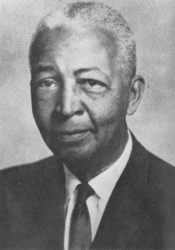
Lloyd August Hall
Born: June 20, 1894
Died: January 2, 1971
Birthplace: Elgin, Illinois
Occupation: Chemist and Inventor
Lloyd August Hall received his Bachelor of Science from Northwestern University in 1914, a Master of Science from Northwestern in 1916, and a Doctor of Science (D.Sc.) from Virginia State College in 1944. Dr. Hall has served as junior and senior Sanitary Chemist of the Department of Health laboratories for the city of Chicago, Illinois from 1915 to 1919. He also served as chief chemist for John Morrel and Company of Ottuma, Illinois (1919-1921). He was President of the Chemical Products Corporation, Chicago from 1921 to 1924. Dr. Hall served as Consultant for Griffith’s Laboratories from 1925 to 1929, later as Technical Director and Chief Chemist of Griffith’s Laboratories in Chicago, Illinois from 1929 to 1946. From 1946 to 1959 Lloyd hall served as Technical Director.
Lloyd Hall served as an assistant chief inspector of high explosives and research for United States government in World War I. Lloyd Hall served as a consultant in the subsistence development and research laboratories of the Quartermaster Corps of the United States Army during World War II. Dr. Hall is the holder of over 100 patents in the United States, Britain, and Canada.
After his retirement, he became a consultant to the Food and Agriculture Organization of the United Nations.
Lloyd Hall is responsible for the meat curing products, seasonings, emulsions, bakery products, antioxidants, protein hydrolysates, and many other products that keep our food fresh and flavorable. Many of today’s food preservative chemicals were pioneered by Dr. Hall’s research. Prior to his discoveries, food preservatives were a matter of chances; the most common preservative was a mixture of sodium nitrate and sodium nitrite. Preservation could be unreliable, where too much sodium nitrite turned foods bitter and unpalatable but too little would not protect against spoilage. Lloyd Hall developed a successful combination of complex chemical salt which has proved to be t he most satisfactory curing salt marketed in this country. He has developed new processes for the sterilization of spices, cereals, and other food materials, and pharmaceuticals which are widely used today. (Carwell)
Areas of expertise and research- meat product proteins
- colloids and emulsions
- fats, oils, and yeast food
- bakery materials
- protein hydrosalates
- flavoring and seasoning of foods and beverages
- sterilization of foods, colloids, and enzymes
- chemotherapeutic products
- food and biological chemistry
- Board of Directors, American Institute of Chemists
- Honor Scroll Award, American Institute of Chemists (1956)
- First black to hold office in the 32-year history of Food Chemists
- Member of Nuclear Regulatory Commission
- Sigma Xi
- Honorary Secretary and Chairman of the Constitution and Bylaws Committee, Institute of Food Chemistry
- American Chemical Society
- Alpha Phi Alpha
- American Public Health Association
- American Academy of Arts and Sciences (AAAS)
- American Oil Chemists’ Society
- Illinois State Academy of Science
- American Association of Cereal Chemists
| # | Patent | Co-Inventor | Invention Title | Date |
|---|---|---|---|---|
| 1 | U.S.1,882,834 | E.E. Mortell | Asphalt Emulsion and Manufacture Thereof. | Oct. 18, 1932 |
| 2 | U.S.1,914,351 | E.L. Griffith | Protective Coating. | June 13, 1933 |
| 3 | U.S.1,995,119 | C.L Griffith | Solid Seasoning Composition Containing Capsicum and Chloride. | Mar. 19, 1935 |
| 4 | U.S.1,995,120 | C.L. Griffith | Nonbleaching Solid Seasoning Composition. | Mar. 19, 1935 |
| 5 | U.S.1,995,121 | C.L. Griffith | Stabilized Solid Seasoning Composition. | Mar. 19, 1935 |
| 6 | U.S.2,022,464 | Vitamin Concentration. | Nov. 26, 1935 | |
| 7 | U.S.2,032,612 | C.L. Griffith | Solid Seasoning Composition Containing Lecithin. | Mar. 3, 1936 |
| 8 | U.S.2,097,405 | Manufacture of Bleached Pepper Products. | Oct. 26, 1937 | |
| 9 | U.S.2,107,697 | C.L. Griffith | Sterilizing Foodstuffs. | Feb. 8, 1938 |
| 10 | U.S.2,117,478 | Curing Meats and the Like. | May 17, 1938 | |
| 11 | U.S.2,142,871 | Homogeneous Alkaline Detergent and Producing Same. | Jan. 3, 1939 | |
| 12 | U.S.2,145,471 | Stabilizing Nitrate Salt Composition. | Jan. 3, 1939 | |
| 13 | U.S.2,142,870 | C.L. Griffith | Alkaline Detergent Compound. | Jan. 3, 1939 |
| 14 | U.S.2,144,371 | C.L. Griffith | Edible Dusting Powder. | Jan. 17, 1939 |
| 15 | U.S.2,155,045 | Inhibited Detergent Composition. | April 18, 1939 | |
| 16 | U.S.2,155,046 | Inhibited Detergent Composition. | April 18, 1939 | |
| 17 | U.S.2,155,417 | Manufacture of Protein Composition. | April 25, 1939 | |
| 18 | U.S.2,171,428 | Composition of Matter. | Aug. 28, 1939 | |
| 19 | U.S.2,189,947 | Sterilization Process. | Feb. 13, 1940 | |
| 20 | U.S.2,189,948 | Sterilization of Pancreatin. | Feb. 13, 1940 | |
| 21 | U.S.2,189,949 | Sterilizing Colloid Materials. | Feb. 13, 1940 | |
| 22 | U.S.2,251,334 | Protein Composition of Matter. | Aug. 5, 1941 | |
| 23 | U.S.2,260,897 | C.L. Griffith | Seasoning Material Derived From Red Peppers and the Derivation Thereof. |
Oct. 28, 1941 |
| 24 | U.S.2,321,673 | Yeast Food | June 15, 1943 | |
| 25 | Re.22,284 | C.L.Griffith | Sterilization Process. | Mar. 9, 1943 |
| 26 | U.S.2,357,650 | Puncture Sealing Composition and Manufacture Thereof. | Sept. 5, 1944 | |
| 27 | U.S.2,363,730 | Manufacture of Nitrogen-Fortified Whey Concentrate. | Nov. 28, 1944 | |
| 28 | U.S.2,385,412 | Capsicum-Containing Seasoning Composition. | Sept. 25, 1945 | |
| 29 | U.S.2,414,299 | Production of Protein Hydrolysate Flavoring Material. | Jan. 14, 1947 | |
| 30 | U.S.2,464,200 | Manufacture of Stable Papain Composition. | Mar. 15, 1949 | |
| 31 | U.S.2,464,928 | Phospholipid Carrier for Antioxidant. | Mar. 27, 1949 | |
| 32 | U.S.2,477,742 | Gelatin-Base Coating for Food and the Like. | Aug. 2, 1949 | |
| 33 | U.S.2,464,927 | L.L.Gershbein | Antioxidant. | Mar. 22, 1949 |
| 34 | U.S.2,493,288 | Synergistic Antioxidants and Preparing the Same. | Jan. 3, 1950 | |
| 35 | U.S.2,500,543 | Antioxidant . | Mar. 14, 1950 | |
| 36 | U.S.2,511,802 | Synergistic Antioxidant. | June 13, 1950 | |
| 37 | U.S.2,511,803 | Antioxidant Flakes. | June 13, 1950 | |
| 38 | U.S.2,518,233 | Synergestic Antioxidant Containing Amino Acids. | Aug. 8, 1950 | |
| 39 | U.S.2,511,804 | L. Sair | Antioxidant Salt. | June 13, 1950 |
| 40 | Re.23,329 | Antioxidant. | Jan. 16, 1951 | |
| 41 | U.S.2,536,171 | Production of Protein Hydrolysate. | Jan. 2, 1951 | |
| 42 | U.S.2,571,867 | L. Sair | Spice Extraction and Product. | Oct. 16, 1951 |
| 43 | U.S.2,553,533 | S.L. Komarik | Curing Process for Bacon. | May 15, 1951 |
| 44 | U.S.2,571,948 | L. Sair | Spice Extraction and Producing. | Oct. 16, 1951 |
| 45 | U.S.2,668,770 | Manufacturing of Meat-Curing Composition. | Feb. 9, 1954 | |
| 46 | U.S.2,668,771 | Stable Curing Salt Composition and Manufacture Thereof. | Feb. 9, 1954 | |
| 47 | U.S.2,677,616 | 1954 | ||
| 48 | U.S.2,758,931 | Antioxidant Composition. | Aug. 14, 1956 | |
| 49 | U.S.2,761,784 | Reaction Product of Polyoxyethylene Derivative of a Fatty Acid Partial Ester of Hexitol Anhydride and Citric Acid and an Antioxidant Containing the Same. | Sept. 4, 1956 | |
| 50 | U.S.2,770,549 | Meat Curing Salt Composition. | Nov. 13, 1956 | |
| 51 | U.S.2,772,169 | Antioxidant Material and Use of Said Materials in Treating Meat. | Nov. 27, 1956 | |
| 52 | U.S.2,772,170 | Antioxidant Composition. | Nov. 27, 1956 | |
| 53 | U.S.2,770,548 | W.S. Kalchbrenner | Meat-Curing Salt Composition. | Nov. 13, 1956 |
| 54 | U.S.2,770,550 | Meat-Curing Salt Composition. | Nov. 13, 1956 | |
| 55 | U.S.2,770,551 | W.S. Kalchbrenner | Meat-Curing Salt Composition. | Nov. 13, 1956 |
| 56 | U.S.2,813,032 | Antioxidant Containing the Same. | Nov. 12, 1957 | |
| 57 | U.S.2,845,358 | H.L. Gleason | Method of Preserving Fresh Frozen Pork Trimmings. | July 29, 1958 |
| 58 | U.S.2,938,766 | Sterilization of Hospital and Physician’s Supplies. | May 31, 1960 | |
| 59 | U.S.2,981,628 | Antioxidant Composition. | Apr. 25, 1961 |
The post Lloyd Augustus Hall appeared first on BlackUSA.
Vinnette Carroll 9 Apr 2025, 3:22 pm
Vinnette Carroll was the first African-American woman to direct a production on Broadway. Vinnette Carroll was born on March 11, 1922 in New York City to Florence and Edgar Carroll. When Vinnette was three the family moved to Jamaica; subsequently, she spent much of her childhood in the West Indies. She received a BA from Long Island University in 1944; and an MA from New York University in 1946; followed by doctoral work in psychology at Columbia University. Carroll’s father encouraged his daughters to become physicians, and as a compromise, Vinnette chose psychology. Carroll worked as a clinical psychologist with the NYC Bureau of Child Guidance before beginning to study acting.
In 1948 she accepted a scholarship to attend the Erwin Piscator’s Dramatic Workshop at the New School for Social Research and studied with Lee Strasberg, Stella Adler, Margaret Barker, and Susan Steele. She made her professional stage debut at the Falmouth Playhouse acting in Shaw’s Androcles and the Lion.
Later in response to the scarcity of roles, Carroll created a one-woman show and toured the United States and the West Indies. For eleven years she taught theater arts and directed productions as a member of the faculty of the High School of Performing Arts in New York City. Her Broadway acting debut came in 1956 when she appeared in a revival of A Streetcar Named Desire.
In 1967 she founded the Urban Arts Corps in New York City. One of the goals of the Corps was to assist minority performers in all theatrical disciplines. Serving as Artistic Director, Carroll selected and directed all of the Urban Arts Corps’ productions, specializing in works by black writers and composers, sometimes writing the material herself.
1972 saw Carroll begin her collaboration with songwriter Micki Grant. Carroll became the first African-American woman to direct a production on Broadway when Don’t Bother Me, I Can’t Cope opened at the Playhouse Theatre. The two women have collaborated on pieces such as Your Arms Too Short ot Box with God and Ups and Downs of Theophilus Maitland.
A talented actress, playwright, and director, Vinnette Carroll has received numerous honors and awards including an Emmy Award, an Obie Award, three Tony Award nominations, and was inducted into the Black Film Makers Hall of Fame in 1979. She is a member of Actors Equity Association and the Screen Actors Guild and is currently the Producing Artistic Director, as well as the founder, of the Vinnette Carroll Repertory Company, which has its permanent home in a church in Fort Lauderdale, Florida.
The post Vinnette Carroll appeared first on BlackUSA.
Anna Maria Weems 8 Apr 2025, 5:52 pm
According to Underground Rail Road records, Anna Maria Weems disguised her gender and used several male aliases in order to escape her plight and acquire freedom. At the time of her escape, she was a “bright mulatto, well-grown, smart and good-looking” fifteen year old girl. Her family members, including her mother, have been sold before she turned thirteen. Because her owners feared that she would escape, they made her sleep in their chamber in order to prevent her from doing so. Finally she had the means to escape with the help of the Underground Railroad. William Still describes her escape in “The Underground Railroad” (1870):
The only chance of procuring her freedom, depended upon getting her away on the Underground Rail Road. She was neatly attired in male habiliments, and in that manner came all the way from Washington. After passing two or three days with her new friends in Philadelphia, she was sent on (in male attire) to Lewis Tappan, of New York, who had likewise been deeply interested in her case from the beginning, and who held himself ready, as was understood, to cash a draft for three hundred dollars to compensate the man who might risk his own liberty in bringing her on from Washington. After having arrived safely in New York, she found a home and kind friends in the family of Rev. A. N. Freeman, and received quite an ovation characteristic of an Underground Rail Road. (185).
Still further points out that Weems later moved to Canada to be educated at the “Buxton Settlement” after staying in New York and Brooklyn. Her story is only one of the many which attests to the courage of the women who participated in this harrowing journey to freedom.
The post Anna Maria Weems appeared first on BlackUSA.
